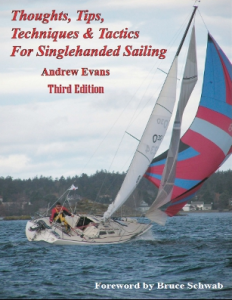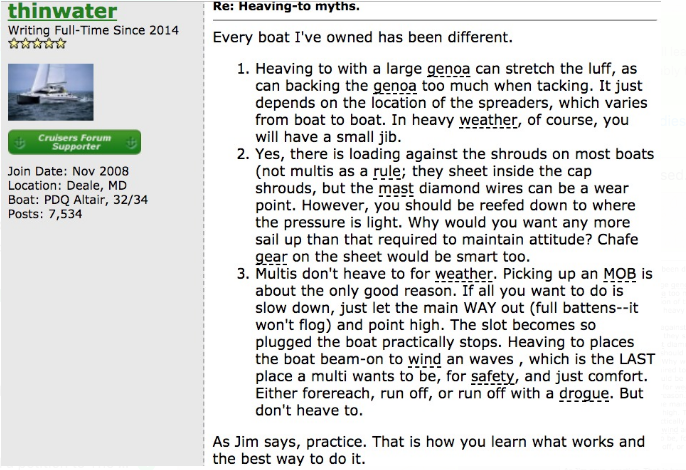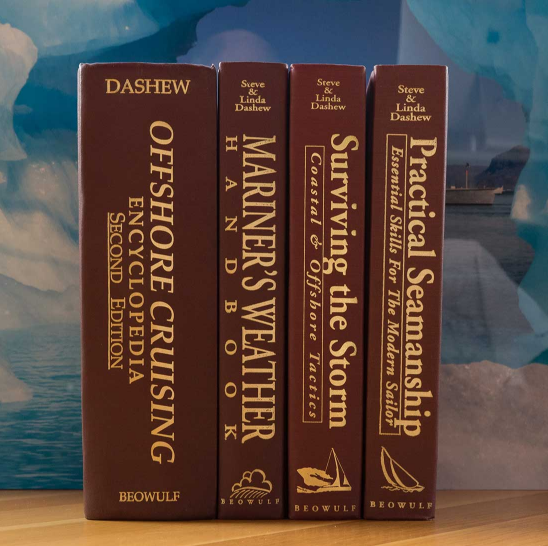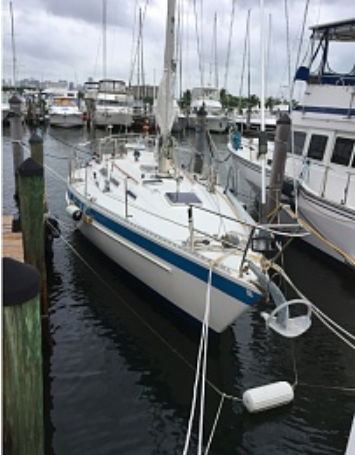How to Sail
Learn to Sail – a very good basic course
Boat Handling
Talking about docking: “Come in slow and look like a Pro, come in fast and look like an Ass.”
Cruisers Forum discussion on Heaving to in a Trimaran
Docking Techniques – Step by step how to. Verbal instruction and powerpoint.
Nautical Apps Courtesy of USPS
Savvy Salts Ultimate Guide to Dock Handling Video
Wavetrain Techniques and Tactics
How to heave to in a Hughes 38:
1. Double reef the main, or raise a storm trysail.
2. Put the boat hard on the wind.
3. Roll up the (roller furling) jib or strike the jib totally.
4. She should now be 45 degrees off the wind.
5. You have four possible adjustments to improve the heave to: Main sheet, traveler, topping lift and rudder. Play with them to achieve to minimize hunting and forward speed,
6. Use the topping lift to take stress off the leach of the sail and the sailtrack.
Waves-Breakers-and-Surf – a Technical Discussion
Thanks Steve and Linda Dashew for these free books:
There is sooooo much information in these books that it will take me years to absorb it all. Thanks Steve and Linda! Merçi! Danka Schoen! Gracias! Obrigado!
You can get all of them right here:
Offshore Cruising Encyclopedia
Chapters 1-7 Chapters 8-14 Chapters 15-21 Chapters 22-28
You can get them here: http://www.setsail.com/free-books/
Delivery Skippers Checklist
Professional Captain’s Delivery Checklist
Hull
Condition and appearance (note and photograph any existing damage)
Location of all thru-hulls
Location of water fills and vents
Location of fuel fills and vents
Location of waste system fittings (yes, people fill holding tanks with diesel sometimes)
Inspect steering system cables and quadrant or hydraulics and check operation lock to lock.
Check for and document hatch and portlight leaks
Check bilge for standing water. (Remember, pumping oily discharge can get YOU in trouble.)
Make sure anchor is secure and can’t get away in rough seas
Navigation Lights & Other Requirements
Check all for proper operation
Locate spare lamps
Locate switches & fuses
Locate flashlights
Locate spotlight
Locate horn for sound signals
Locate courtesy flags, quarantine flag and ship’s flag
Bell, for vessels over 39.4 feet
Safety
Check condition and number of PFD’s
Location and expiration of flare kit
Location of EPIRB
Condition and expiration of liferaft
Location of abandon ship kit
Location and state of charge for handheld VHF
Location and condition of MOB gear
Locate or bring binoculars
Vessel Paperwork
Check that state registration is properly displayed
Locate federal documentation
Locate copy of insurance policy
Locate copy of towing policy and verify you are covered on that vessel
Locate authorization letter from owner
Locate cruising permits
Locate ship’s log
Locate MARPOL visible trash placard for vessels 26 feet and over.
Boats 40 feet and over must also have a written trash disposal plan available onboard.
Check installation of radar reflector
Check for approved fire extinguishers in working order
Check for safety harnesses
Check for boarding ladder
Check operation of all VHF’s
Locate wooden plugs for thru-hull fittings
Locate first aid kit
Locate emergency underwater epoxy
Test CO, smoke, and vapor alarms
Check bilge pump operation using bilge pump float switch
Sail & Rigging
Check condition of sails
Check condition of running rigging including turnbuckles and cotter pins.
Check condition of standing rigging
Check operation of rig
Check procedure for reefing
Check for chafe in furling line
Locate spare winch handles
Engine & Electrical
Engine overall condition
Location of engine manual
Location of engine spares
Location and quantity of engine oil
Know how to prime and bleed system
Location of extra coolant
Location of tool kit
Verify operation of panel
Locate spare fuses
Check gauges for operation
Check oil and transmission fluid level
Check power steering fluid and coolant level
Check engine room hose clamps and hoses for leaks
Look for obvious chafed wires and hoses
Check stuffing box for leaking at rest and underway.
Check rudder stuffing boxes for leaks
Check all seacocks for leaks and verify they can be closed.
Check seawater intake strainer and clean if necessary
Verify operation of bilge blower for gas engines
Verify fuel tank sender is operating and accurate
Check tightness and condition of all belts
Check electrolyte level in batteries
Check operation of trim tabs, if equipped
Charts & Navigation
Locate charts for area
Locate tides & current book
Locate electronic charts
Locate plotting tools and pencils
Check sounder, GPS, and radar operation
Locate or bring spare GPS
Locate Chart # 1 for vessels over 39.4 feet
Locate or bring hand held VHF
Locate ship station radio license if needed (vessels over 65 feet, and any vessels that use INMARSAT or SSB, or any vessels that will be transmitting outside US waters)
Passport, if needed
Miscellaneous
Camera
Hat & sunglasses
Garbage bags
Waterproof matches & lighters
Adequate stove fuel
Check fresh water tank for potability
Check for legality and operation of head.
Locate key for deck fills
If all things on this checklist are not satisfied I will walk away form the delivery.
Singlehandling
Facebook Group for Singlehanded Sailing
For a slip catching bridle: see photo below. Just motor in and stop the boat when you are 1/2 the way into the slip & then put the boat in forward at idle speed. The bridle will stop the boat before it hits the dock. Calmly walk forward and attach your bow lines but a bit looser than normal. Put the boat in reverse at idle and it will slowly go backwards until the bow lines stop it. Calmly attach your stern lines. Put engine in neutral or shut it off. Go forward and adjust your bow lines to where you want them. Cleating locations on your lines should be marked. Thanks to Roniszoro from Cruisers Forum

SinglehandedTipsThirdEdition – It doesn’t get better than this!
Jeff H. on Singlehandling – lots here on spinnaker flying singlehanded


